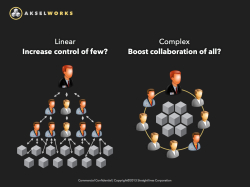Drunk’s Logic Is Too Common In Fast Projects

One of my favorite books I have read in the area of what I refer ”turbulent systems”, is Bertuglia’s and Vaio’s Nonlinearity, Chaos & Complexity (The Dynamics of Natural and Social Systems).
The book is not only math; it’s also a philosophical approach to the phenomena and systems, which behave chaotically or in a very complex manner.
In the book there is a well-known story of the drunk who, one night, is looking under a street lamp for his keys he has dropped on the ground. A passer-by asks him where he lost his keys and he replies ”over there” showing a place further away in the dark. The passer-by: ”Well why are you looking here, if you have lost them over there?” Drunk says, a bit stunned: ”Because here’s a light and I can see, but over there I can’t see anything!”
What has this to do with projects? Let me tell you. In very urgent projects I have seen this kind of ”logic” many times. I’d like to call that pattern as ”running after the train so hard not to have time to check whether it is the right train”. This is exactly what happens in the panic projects and in the middle of the crisis.
One reason for the logic described above – in projects I have run or participated during last 25 years – is that there is an inherent contradiction between perception of planning and actual implementation.
Let me explain a bit further.
When we start a project, we are trying to categorize, sequentialize and linearize the work and the related elements. The logical part of our brains is satisfied – and we feel safer after we have arranged bits and pieces in the right places.
But when actions have already started – especially in very fast projects – we often find ourselves either trying to ”re-structure” the project again and again, or we just give-up and carry-on doing daily/hourly activities. Things in project seem to be reactive, surprising, complex and sometimes chaotic.
The point is that if we carry on desperately using structural and hierarchical approach in the implementation phase, we’ll get in very deep trouble!
In the worst case we – as managers – see the problems from our own perspective, which is often control. Few of us get more control, but the most of us get more workload (related to controlling). (Pic1).
In the case when the business environment is stable and you know what is coming up, you are able to arrange organization and the work rigidly (e.g. silos) and you probably get the best results. But if the business environment is not stable, you know much less what is coming and you need much more interaction between system’s parts (organization and work).
Silos in the planning phase
are turning to be
Interconnective parts of the networked system when in implementation phase.
In the fast projects – because we do not have enough time – the actual doing plays much more important role than the planning. If you look at the Picture 2, you can see that the number of participants or stakeholders is much smaller than number of links between the participants – practically square of the number of participants.
In the real life there are many kinds of connections between the parties: there are several different projects and tasks, there are many combinations of the groups, there are different types of interconnections, accordingly the network complexity factor is astronomical – far beyond the capabilities the single management can handle.
And now we come back to the Drunk’s logic:
If my view to the project is planning oriented, I will focus my light only towards those things I can – namely either work-objects or persons. Moreover the corresponding corrective actions reflect the very same: e.g. decrease number of tasks, push certain people more or get rid of ”loosers”.
But if I had a new kind of light, I could instead – luckily early enough – get totally new kind of information of total network throughput, where the emphasis is in networks interconnections instead of its parts.
In my previous blog ”Understanding Importance of Time in The Project Work” I presented an urgency-factor – V(volume left) per T(time left) – which increases very fast when the available time is running out. If you now combine above with that urgency factor, you can understand what an enormous potential there is to be utilized!
I will carry on constructing the ”light” in my blogs, please do not hesitate to give comments, questions, anything! Very much appreciated.
Pekka Ylisirniö


I did a similar analysis of US govt organization.
http://orgnet.com/orgchart.html